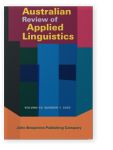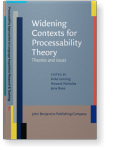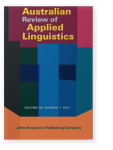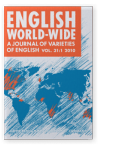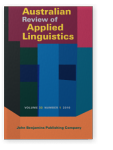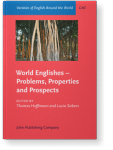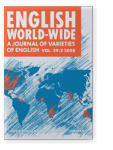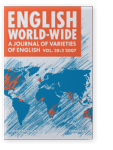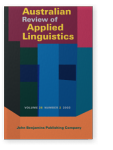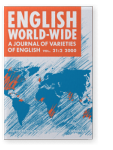Donna Starks
List of John Benjamins publications for which Donna Starks plays a role.
2020 Discursive constructions of the viewing of a bathroom as a linguistic landscape in a shared home Australian Review of Applied Linguistics 43:1, pp. 29–51 | Article
In the linguistic landscapes (LL) literature there is frequent mention of the viewing of public locales by passers-by, owners, and tourists, who necessarily enter and exit locales in different ways, times, and conditions. This paper extends our understanding of the viewing of LL by investigating… read more
2019 Chapter 7. Using the Multiplicity framework to reposition and reframe the Hypothesis Space Widening Contexts for Processability Theory: Theories and issues, Lenzing, Anke, Howard Nicholas and Jana Roos (eds.), pp. 157–184 | Chapter
In this chapter we explore how the Multiplicity framework of the communicative repertoire offers ways to expand understandings of Hypothesis Space and widens insights into the process of second language acquisition currently offered by PT. We focus on the potential of the Multiplicity framework for… read more
2011 Afrikaans language maintenance in Australia Australian Review of Applied Linguistics 34:1, pp. 4–23 | Article
Changes in the political climate in the home country have resulted in the emigration of South Africans to English speaking countries such as Britain, Canada, Australia and New Zealand. Despite the scale of movement of the South African population, language maintenance in these diasporic contexts… read more
2009 Finding one’s own vowel space: An acoustic analysis of the speech of Niuean New Zealanders World Englishes – Problems, Properties and Prospects: Selected papers from the 13th IAWE conference, Hoffmann, Thomas and Lucia Siebers (eds.), pp. 125–140 | Article
This paper compares the vowel system of five New Zealand Niuean children to that of speakers of New Zealand English (NZE), via an acoustic analysis. The Niuean children’s vowel systems show a vowel inventory, triangular vowel space, and front vowel raising characteristic of New Zealand English.… read more
2008 National and ethnic identity markers: New Zealand short front vowels in New Zealand Maori English and Pasifika Englishes English World-Wide 29:2, pp. 176–193 | Article
The New Zealand (NZ) short front vowels are often considered as a defining feature of New Zealand English (NZE), yet research which has considered data from both the Pakeha (NZ European) and the NZ Maori communities has noted slightly different patterns in the realisations of the vowel in the KIT… read more
2007 Niuean English: Initial insights into an emerging variety English World-Wide 28:2, pp. 133–146 | Article
This paper provides an initial analysis into the phonetic and phonological features of Niuean English as spoken in the New Zealand Niuean community. The paper highlights similarities and differences between New Zealand English and Niuean English, points to subtle differences due to potential… read more
2003 The annotated bibliography: Structure and variation within a genre Australian Review of Applied Linguistics 26:2, pp. 101–117 | Article
Generic structures have been developed for longer genres such as reports (Marshall 1991), book reviews (Hyland 2000) and specific parts and types of articles (Brett 1994) but so far, many shorter genres such as the annotated bibliography (AB) have not been examined. This study reviews four… read more
2000 4. ‘No-one sounds like us?’ A comparison of New Zealand and other southern hemiphere
Englishes New Zealand English, Bell, Allan and Koenraad Kuiper (eds.), pp. 53–83 | Article
2000 Distinct, but not too distinct: Gender and ethnicity as determinants of (s) fronting in four Auckland communities English World-Wide 21:2, pp. 291–304 | Article
This paper shows how a rapid taped survey is used to collect language samples from four New Zealand speech communities. It details the methodology in the study, and presents an analysis of one variable, (s) fronting. This variable is of special interest because, although phoneticians have noted… read more
